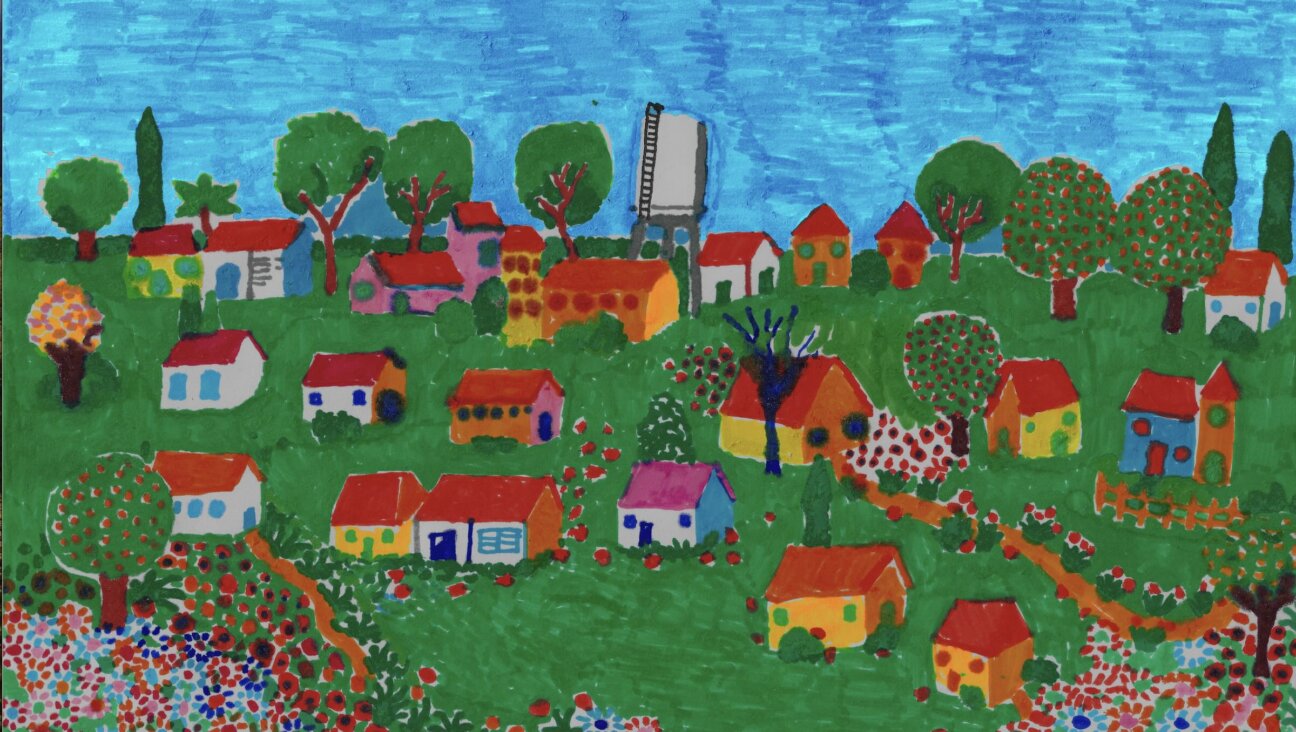What We Have Lost: Reading a New Translation of Der Nister’s Yiddish Masterpiece
While giving a lecture in Central Oregon recently about my novel “The World To Come,” whose story incorporates the works of many Yiddish writers, I was asked a remarkable question by someone in the very non-Jewish audience: “What do we lose by not reading Yiddish literature?”
The question disturbed me. In its challenge to the worthiness of art, it seemed to contain the challenge that the non-Jewish world has always put to Jewish civilization: that one must prove one’s right to exist. Taken aback, I babbled about surrealism, about how even the most realist Yiddish writers often eerily blur the boundaries between the normal and the absurd, or between this world and the next — partly because of the Jewish religious legacy of infusing every mundane act with a sense of holiness, and partly because, even in secular experience, Jewish history is itself surreal.
But for that audience, I felt unable to mention the salient feature of Yiddish literature that remains beyond the reach of American Jewish writers today: the strange freedom that these Jewish writers had to write their stories while knowing that only Jews would read them. Those American Jews who are fortunate enough to read “The Family Mashber,” the 1948 masterpiece by Soviet Yiddish writer Der Nister that has just been republished in paperback translation, will experience what it means to read such a book — and to know what we have lost.
Pinkhas Kahanovitsh, who wrote under the pseudonym Der Nister (or “The Hidden One”), was a master of the surreal. His short stories, many published while he was living in Germany in the 1920s, are tangled webs of plot and symbolism that bring to modern Jewish literature the radiance of religious tales. Among other Yiddish writers, Der Nister was invited back to the Soviet Union in the early 1930s when the regime was officially promoting Yiddish culture as one of the USSR’s celebrated “nationalities” — as long as such writers agreed to write only “socialist realism.” Der Nister’s luminous surrealism was forbidden by law. Instead, he embarked on an entirely realistic novel set in the 19th century, written in a style so different from his previous work that the reader marvels at his versatility, even while cringing at the occasional communist pieties he inserted to satisfy the censor. What is astounding about this book, despite its extreme realism, is how it achieves a kind of surrealistic magic of its own. Despite its outwardly censor-approved story, the novel contains a hidden commentary on coercive belief — and, through its breathtaking depth of detail, an almost supernatural resurrection of a Jewish life that failed to prove its right to exist. Reading this massive novel is the closest anyone can come today to living in that world.
No one should want to live in that world. “The Family Mashber” is the story, above all, of a single family’s financial meltdown. The narrative premise of a spectacular rise and fall is a common enough literary trope, and as we watch the respected banker Moshe Mashber’s fortunes crumble over the course of this sprawling, gorgeous book, it’s disturbingly easy to read it as a rags-to-riches story in reverse, a story of how one man’s greed or ambition leads him to his own deserved destruction. But what makes this book truly alarming for the American Jewish reader is to see revealed in its plot just how fragile European Jewish life always was — how horrifyingly irrelevant the characters’ own actions ultimately are to their own fates.
The fall of the house of Mashber is precipitated not by any error or crime on Moshe’s part, but rather by the whims of the Polish gentry. The plot is set in motion when Moshe’s son-in-law visits a local nobleman to collect on a loan. The nobleman, rather than paying, pulls out a gun. This loss is difficult for Moshe, but the next blow proves catastrophic. As the nobles feast at a Jewish inn during the annual fair, again a nobleman, drunk, pulls out a gun — this time aiming his shot at a portrait of the Russian tsar, to whom the nobles must pay tribute. When a government informant threatens to squeal, the nobles must bribe him with money they don’t have, money they then “borrow” from the Jews. And thus Moshe, a business leader in the almost entirely Jewish city of “N.,” is set on the long path to ruin.
What follows is a stunning domino effect, as Moshe tries with increasing desperation to save his family, and a portrait of a European Jewish community (based on Der Nister’s hometown of Berditshev) that will forever destroy any American Jewish reader’s nostalgia for Jewish life in the Old World. We meet extortionists like Yakov-Yossi, who specialize in usurping the property of only the most desperate debtors; enforcers like Tsali Derbaremdiker, who exact payment by threatening to rape debtors’ wives; rabbis like Reb Dudi, whose chief concern is the formal excommunication of supposed heretics whose families are then effectively starved to death, and women like Perele, who make their living by killing the infants of unmarried servant girls.
But unlike much of Yiddish literature, where such figures appear as one-dimensional caricatures meant to stun the Jewish reader into reforming the community, this novel portrays these figures with neither contempt nor nostalgic pity. Instead, each character is presented with an almost painful clarity. Flaws and mortal sins are laid bare in such a way that they become human — not because the reader can forgive them, but precisely because the reader cannot forgive them, because these people’s identities, despite their limited circumstances, are so clearly products of their own drives and choices. And here we find the strangely subversive aspect of this novel. Despite its smattering of communist pieties, “The Family Mashber” is an affirmation not of economic fatalism, but of the astounding power that Judaism offered the world when God told Israel to choose life: the power of free will.
Intertwined with Moshe’s downfall is the rise of Moshe’s brother Luzi, who, after years of spiritual seeking, has decided to become an adherent of the dead rebbe Nachman of Bratslav and the leader of N.’s Bratslaver sect. The Jews of N., including Moshe, regard the Bratslavers as fanatics, rejects who immerse themselves in ecstatic prayer at the price of abandoning (and destroying) their families.
And herein lies Der Nister’s brilliant bait-and-switch. The novel passed muster with the communist censor in part for its negative portrayal of religious faith. But in its depiction of the brutal mind control exercised by the Bratslavers and other religious figures motivated by a utopian or messianic vision, it contains a sly condemnation of those who would judge others for failing to conform to an ideology, or those who would abandon the “bourgeois” obligations of family life for the sake of some ostensibly higher ideal.
As the Bratslaver leader, Luzi soon befriends Sruli Gol, a tactless man living a wandering pauper’s life — but who secretly owns a vast fortune, which he uses to manipulate everyone in town to his will. Sruli uses his wealth only for apparent good deeds — feeding a sick man’s family, buying Moshe’s house on paper so that it cannot be seized — but these ostensibly altruistic acts are in fact a kind of social engineering that, while benefiting the desperate, ultimately places both rich and poor in his power. As Sruli appears everywhere, unbidden, to force the outcomes of situations and curtail the free will of everyone in N., the reader senses the presence of the Soviet system that determined people’s fates for a supposedly greater good, and also the secret police that trailed Der Nister as he was completing this masterpiece — the same police that ultimately arrested him before he completed it.
“The Family Mashber” was intended as a trilogy, with the final nonexistent volume following Moshe’s grandson through the events of the communist revolution. In my own novel, as I tried to re-create the life of Der Nister and his fellow Yiddish artists, I imagined a place where the Hidden One might have hidden that lost book. But I now believe that he never wrote it at all. In its desperate recounting of an entire city’s deeds, in its resurrection of a world forgotten even then, Der Nister’s novel as it stands is a kind of deathbed confession for Ashkenazic Jewish life. The author lacked the freedom to tell the story of the regime that destroyed it, and him.
What we are left with, then, is the last gasp of a European Jewish imagination: a stunning display of what was possible when Jewish writers had the freedom to write for an audience that never would question the worthiness of their art. Jewish writers, even Israeli ones, don’t have that freedom anymore. But perhaps this book will inspire in both writers and readers the courage to find it again — the freedom to believe that all our stories, when told well, are worth telling.
Dara Horn has a doctorate in Yiddish and Hebrew literature and is the author of the novels “In the Image” (W.W. Norton, 2003), “The World To Come” (W.W. Norton, 2006) and the forthcoming “All Other Nights” (W.W. Norton, 2009).
A message from our Publisher & CEO Rachel Fishman Feddersen

I hope you appreciated this article. Before you go, I’d like to ask you to please support the Forward’s award-winning, nonprofit journalism during this critical time.
We’ve set a goal to raise $260,000 by December 31. That’s an ambitious goal, but one that will give us the resources we need to invest in the high quality news, opinion, analysis and cultural coverage that isn’t available anywhere else.
If you feel inspired to make an impact, now is the time to give something back. Join us as a member at your most generous level.
— Rachel Fishman Feddersen, Publisher and CEO























